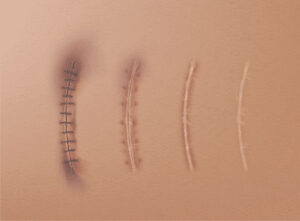 Understanding the Phases of Surgical Wound Recovery
Understanding the Phases of Surgical Wound Recovery
When it comes to surgical wound recovery, the process can be broken down into several distinct phases, each playing a crucial role in the overall healing process. By understanding these phases, patients and healthcare providers alike can optimize recovery and minimize complications.
Inflammatory Phase: A Crucial Start to Healing
The inflammatory phase marks the initial response to tissue injury. Blood vessels constrict to limit bleeding, followed by the release of inflammatory cells to clean the wound site and remove debris. This phase typically lasts for a few days and sets the stage for the subsequent phases of healing.
Proliferative Phase: Tissue Regeneration and Renewal
During the proliferative phase, new tissue begins to form at the wound site through processes such as angiogenesis (the formation of new blood vessels) and fibroplasia (the production of collagen). Epithelial cells migrate to cover the wound, and granulation tissue fills in the gap. This phase can last from several days to weeks, depending on the extent of the injury.
Maturation Phase: Scar Formation and Remodeling
In the final phase of wound healing, known as the maturation phase, the newly formed tissue undergoes remodeling to strengthen and refine the scar. Collagen fibers realign, and excess tissue is broken down and removed. While the wound may appear healed externally, this phase can continue for months or even years as the scar gradually matures.
Factors Influencing Surgical Wound Recovery
Several factors can influence the speed and success of surgical wound recovery, including the patient’s overall health, the extent of the injury, and the presence of underlying medical conditions such as diabetes or vascular disease. Proper wound care, nutrition, and mobility also play essential roles in promoting optimal healing.
Optimizing Healing in Each Phase
Optimizing wound healing requires a comprehensive approach tailored to each patient’s specific needs. This may include regular monitoring by healthcare providers, appropriate wound care techniques, and addressing any underlying health issues that may impede healing.
Managing Scarring and Long-Term Care
While some scarring is inevitable following surgery, various techniques can help minimize its appearance, including silicone gel sheets, massage, and laser therapy. Additionally, ongoing monitoring and follow-up care are essential to address any complications that may arise during the recovery process.
Understanding the phases of surgical wound recovery is essential for both patients and healthcare providers. If you or a loved one is facing surgical wound recovery, don’t hesitate to contact DFW Wound Care Center. With our expertise in advanced wound care techniques, we can provide the personalized care needed to promote healing and improve outcomes. Schedule an appointment today at one of our convenient locations in Plano, Lewisville, Irving, or DeSoto.
Contact us
Schedule an appointment
with our specialists by contacting us or calling our:
